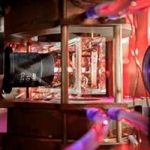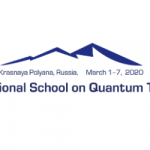Quantum Computers Flip the Script on Spin Chemistry; Findings May Advance Research on Energy Conversion & Photovoltaics

(Phys.org) IBM’s study, “Simulation of Quantum Beats in Radical Pairs on a Noisy Quantum Computer,” indicates the special qualities of quantum computing that will help researchers advance technologies for solar energy conversion, artificial photosynthesis and photovoltaics to an entirely new level.
IBM Research and the University of Notre Dame scientists—with help from students at Georgetown University, DePaul University, Illinois Institute of Technology and Occidental College in Los Angeles—used a cloud-based IBM Quantum computer to simulate how a chemical reaction outcome is controlled by the time evolution of the entangled state of the two reactants, and how this spin chemistry phenomenon is affected by the gradual loss of magnetization and dephasing caused by thermal fluctuations.
To build cheaper and more efficient sustainable energy options, we need to know a lot more than we currently do about the chemical reactions that convert solar energy into electricity. One of the best ways to do that is through computer models that simulate complex molecular interactions.
Spin chemistry is a subfield of chemistry that deals with magnetic spin effects in chemical reactions. It connects quantum phenomena such as superposition and entanglement to tangible chemistry parameters such as reaction yield (the amount of whatever a chemical reaction produces). With a quantum computer, spin chemistry allows us to directly simulate some dynamic chemical processes, basically the kinetics of chemical reactions. Spin effects in radical pairs play an important role in processes underlying solar energy conversion.























